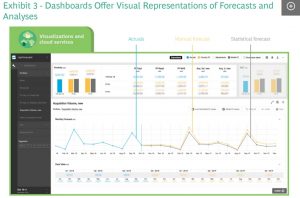This is the first in a series of articles by Boston Consulting Group and Daimler Mobility discussing the concept of forward-looking financial steering. Here, we introduce the concept and explain how companies can use it. Subsequent articles will address implementation challenges related to people and technology. The insights are derived from Daimler Mobility’s successful deployment, with BCG’s support, of forward-looking steering in its global operations.
People don’t steer their cars solely on the basis of what they see in the rearview mirror, yet that is essentially how most business leaders steer their companies: they look backward to decide how to move forward. This method makes it hard for companies to cope with the ever-increasing levels of uncertainty in today’s business environment. To keep up to speed, companies need an approach to financial steering that permits rapid and effective course corrections in anticipation of future developments. Companies should spend far less time developing detailed plans and far more time taking action to counter threats and capture opportunities.
To make that happen, the paradigm for steering must fully shift its focus from backward looking to forward looking. Backward-looking steering entails analyzing deviations between plan targets and actual performance. Forward-looking steering entails comparing targets with forecasts of how KPIs will evolve over specific time horizons. To truly adopt forward-looking steering (as described in this article), a company must use algorithmically derived forecasts.
Although it is common for companies to produce forecasts manually, few companies use algorithms. Algorithmically derived forecasts allow the focus to shift from periodically reporting results to accurately forecasting the development of KPIs—faster and with less effort. Armed with foresight into how conditions will change, companies can take action to preempt unfavorable outcomes and promote competitive advantage.
Adopting algorithm-based, forward-looking steering is not easy, however. A company must enrich its traditional manual processes with a data-driven, automated approach to generating forecasts and performance reports. Among the many challenges are assembling a team that has statistical capabilities, setting up a new technical infrastructure, and building people’s trust in technology.
“To master the digital transformation, a company must take a comprehensive approach to algorithm-based forward-looking steering,” says Stephan Unger, Daimler Mobility’s Chief Financial Officer (CFO). “This includes not only advanced analytical methods, new technologies, and the right expertise, but also an engaging approach to change management.”
By Gerhard Unger and Marc Rodt
More: https://www.bcg.com/publications/
